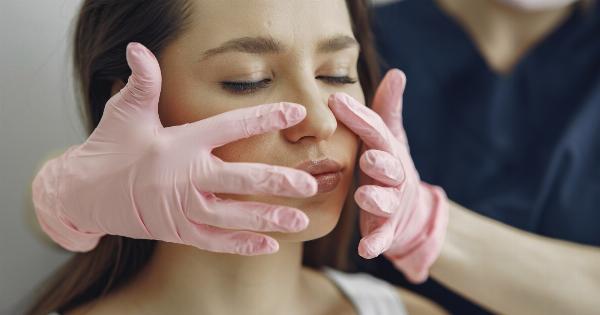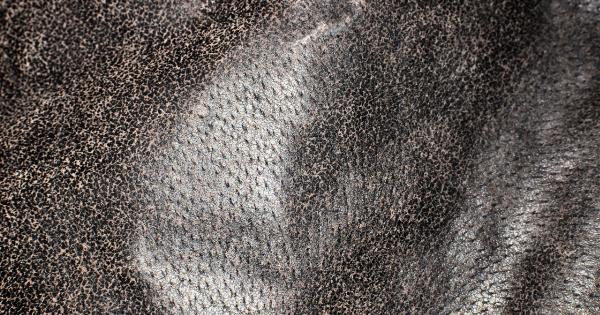As the winter season sets in, it brings chilly winds and low temperatures that can have a harsh impact on your skin. Cold weather tends to strip your skin of moisture, making it dry, flaky, and even itchy.
Moreover, the harsh winter elements can aggravate existing skin conditions like eczema and rosacea, making it crucial to take extra care of your skin during this time. To help you maintain a healthy and radiant complexion, here are 12 techniques to protect your skin against the chill:.
1. Moisturize Regularly
Keeping your skin moisturized is crucial during winter. Opt for a rich, oil-based moisturizer that provides deep hydration and forms a protective barrier on your skin.
Look for ingredients such as hyaluronic acid, glycerin, and ceramides, as they help lock in moisture. Apply moisturizer at least twice a day, focusing on areas prone to dryness, such as your hands, elbows, knees, and face.
2. Use a Humidifier
Central heating systems and room heaters can dry out the air indoors, contributing to skin dryness. Counteract this by using a humidifier to add moisture back into the air.
This helps prevent your skin from becoming parched and maintains its natural hydration.
3. Protect Your Hands
Your hands are often exposed to the cold weather, making them susceptible to dryness and cracking. Wear gloves whenever you go outside to shield your hands from the chilly winds.
Additionally, applying a thick hand cream or ointment frequently throughout the day helps to keep them moisturized and prevents moisture loss.
4. Don’t Forget Your Lips
The delicate skin on your lips is particularly vulnerable to the winter chill. Protect them by applying a nourishing lip balm with SPF. Look for balms containing ingredients like beeswax, shea butter, and almond oil.
Reapply as needed throughout the day to maintain soft, supple lips.
5. Avoid Hot Showers
Although a hot shower may be tempting in the cold weather, it can strip your skin of its natural oils and exacerbate dryness. Opt for lukewarm showers instead and limit their duration.
After showering, gently pat your skin dry with a towel and apply moisturizer while your skin is still damp to lock in hydration.
6. Exfoliate Gently
Regular exfoliation is essential to remove dead skin cells and promote cell turnover, but bear in mind that the winter chill can make your skin more sensitive.
Opt for a gentle exfoliator that won’t aggravate your skin and use it no more than twice a week. This helps to maintain a smoother complexion and allows better absorption of moisturizers.
7. Stay Hydrated
While it’s important to moisturize externally, staying hydrated from within is equally crucial. Drink plenty of water throughout the day to keep your skin hydrated and to flush out toxins.
Herbal teas and warm water with lemon can also be beneficial during winter, providing hydration while offering antioxidants to aid skin health.
8. Wear Sunscreen
Even during winter, the sun’s rays can be harmful to your skin. Snow can reflect up to 80% of the sun’s UV rays, increasing your exposure. Protect yourself by applying a broad-spectrum sunscreen with an SPF of 30 or higher.
Don’t forget to apply it to frequently overlooked areas such as your ears, neck, and the back of your hands.
9. Opt for Gentler Cleansers
Many cleansers can be too harsh and drying for winter skin. Look for creamy or oil-based cleansers that gently remove impurities without stripping away the natural oils of your skin.
Avoid using hot water to cleanse your face, as it can further dehydrate your skin. Instead, use lukewarm water to wash your face and pat it dry with a clean towel.
10. Protect Your Skin Outdoors
When venturing outside in the cold, protect your skin by ensuring it is properly covered. Wear a hat, scarf, and a thick coat to shield your skin from cold winds.
Additionally, if you’ll be outside for an extended period, apply a thin layer of moisturizer on your face to provide an extra barrier against the drying effects of the cold air.
11. Choose Skin-Friendly Fabrics
Some fabrics, like wool and synthetics, can irritate the skin and cause excessive dryness and itching. Opt for soft, natural fabrics such as cotton and silk, as they are gentle on the skin and reduce friction that can lead to irritation.
When layering clothing, ensure that the fabric closest to your skin is skin-friendly to minimize any potential irritation.
12. Seek Professional Help
If your skin concerns persist or worsen despite your efforts, it may be beneficial to consult a dermatologist. They can assess your skin’s condition and provide tailored advice and treatment options to alleviate any winter skin issues.

























